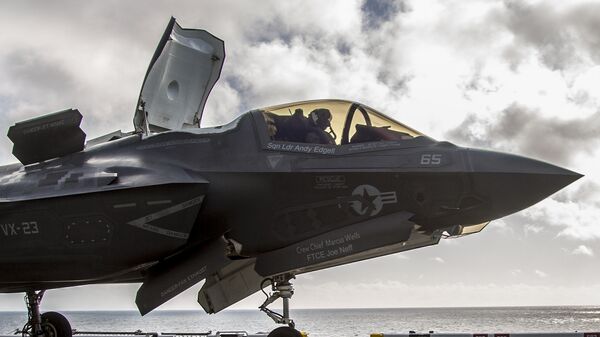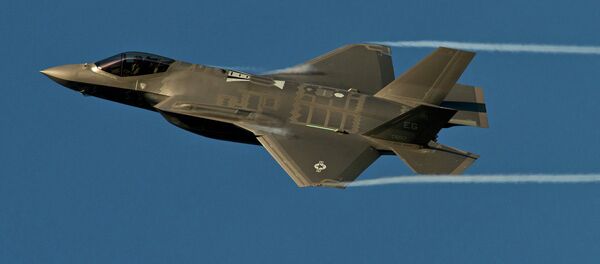The problem is that the F-35C’s catapult launch jostles pilots so badly they often can’t read their instruments – and that’s if they’re lucky enough not to be thrown into the cockpit roof.
Lockheed and the Navy have been trying to figure out how to keep pilots safe and still. “The initial indication is some of those techniques" used for keeping pilots harnessed “improved,” says Lockheed executive Jeff Babione, but the Navy still must trial the fixes "to see whether or not those changes were successful."
The highly touted and equally controversial fifth-generation jet may suffer from a bad case of being over-hyped. The evidence? US pilots don’t like flying it.
F-35C pilots say they are "hurting after doing three or four" of the aircraft’s signature catapult launches, which allow the F-35 to take off from shorter airstrips, Lieutenant General Chris Bodgan said. "That’s not good for the canopy or the helmet. So we knew we had an issue there."
Bogdan has been the Pentagon’s point man for defending the insanely expensive F-35, and even he has conceded that pilots aren’t in love with the Pentagon’s latest toy.
"This is a very stiff plane … it beats the pilots up pretty good," Bogdan said during the McAleese/Credit Suisse defense conference in Washington, DC, March 22.
Here is a sample of the issue, posted by Business Insider.
— JR Vianney (@jrvianney) January 27, 2017
The helmet is jostling about, straining pilots’ necks, and in some cases pilots have reported hitting their heads on the top of the cockpit.
As a result of the oscillations, “fleet pilots,” according to US Naval Institute News, “could not read critical flight data, an unacceptable and unsafe situation during a critical phase of flight.”
The unstable takeoff also "made emergency switches hard to reach, again creating, in [the fleet pilots’] opinion, an unacceptable and unsafe situation."



